Here’s why I’m asking:
- I’m about to go interview the developer of my signature electric harp at his factory in France and I need a list of questions YOU want me to ask and images that YOU want to see.
- If you know an editor or writer at “Wired” who would be interested in this story – I need your help connecting with them. This is an unusual story of the collaborative relationship between a developer and a super-user.
- You techies out there – I’m probably using tech-terminology incorrectly in this story – but when you read it, you’ll know what I’m talking about – so please give me the right words so I can communicate with the tech community about this.
Here’s the story:

My original cobbled-together prototype
25 years ago I invented a new kind of harp — meaning, I visualized it and fell in love with the idea, started drawing designs of it, describing it to harp builders and begging them to make me a prototype.
It was a new kind of instrument – a harp the size and power of an electric guitar – like the love-child of a concert harp and an Stratocaster.
It’s the harp I play today. The one that’s named after me, the “DHC.”
Long story short …
I cobbled together a prototype and took it to the world’s most visionary harp builder – Joel Garnier, the head of CAMAC Harps in France. He made a ‘real’ prototype from mine, and it became my signature instrument.
When he died, his protégé, Jakez Francois, continued development and it’s now become the standard of electric harps and if you want one you can get on a waiting list – they’re in high demand.
But the road wasn’t totally smooth.
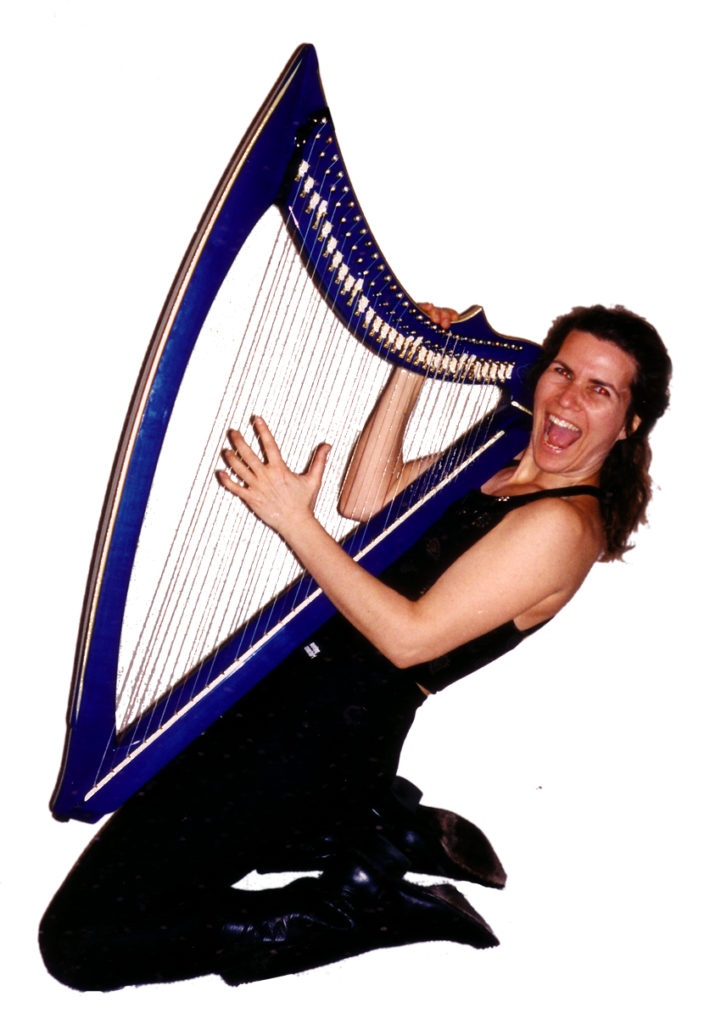
I re-enact my impression of ‘the rock harpist’ pose with CAMAC’s first prototype – weight, about 18 pounds
CAMAC’s first prototype was great, but was made of wood. It was heavy – and each progressive model got heavier as the hardware was improved. Eventually it became so heavy it was unplayable.
In 2010 I convinced CAMAC to collaborate with bicycle manufacturers in France to create a new super model of the instrument that would bringing racing bike technology to harp manufacturing. I wanted a model light enough to easily wear, powerful enough to solo with symphony orchestras and tour with a rock band. Because I do both those things.
And that’s exactly what happened. CAMAC did go to the bike builders. They used bike body-design to create a new carbon-fibre model harp, which has now become the standard for wearable electric harps and that’s the model that carries my name – the “DHC” model.
Success! Well … yes and no.

The very first bike-technology prototype – the first-ever “DHC” model harp
The CAMAC company is the manufacturer – but nobody on their team plays this instrument with the kind of physicality I do – so nobody puts the kind of performance demands on it that I do.
So, while the technology and design of the instrument is impeccable, the user interface can be problematic.
- The harness hardware works for a person who’s standing, but not for one who’s dancing.
- The harp stand is secure – but it weighs 15 pounds so it’s unrealistic to transport in luggage.
- Shifting the harp between the harness and the stand requires 30-60 seconds to adapt the hardware — completely unrealistic during a show where I’m taking the harp on and off regularly – plus it means removing a small proprietary piece of hardware that, if I lose it, makes the harp unusable.
That’s just the beginning.
Are these big “problems?” Well … sure … but … The truth is, it’s NORMAL and it’s part of the rich and ever-evolving collaborative process between a developer and a primary user. It’s actually a beautiful relationship and a rich collaboration.
Just Like a Software Developer and the Primary User

Rocking out on stage with the “DHC” harp
As my relationship with CAMAC has developed over the decades and we’ve collaborated on the development of new technology and all the ancillary elements that make that new technology actually usable I’ve been struck by how closely my experience with CAMAC parallels the relationship of software developers and the super users who make brilliant new technology actually USABLE by normal people.
For example: I designed the harness that makes it possible to actually wear the instrument, I write music people can play on it, I train harp players in how to use it and how to make the adaptations to the instrument that make it actually viable in concert.
As the instrument is now becoming a serious ‘player’ in the harp field, this is part of my role as the original conceptualizer and the primary player.
At first it totally frustrated me that I couldn’t use the harp ‘out of the box.’ Until I started using WordPress …
What WordPress Taught Me
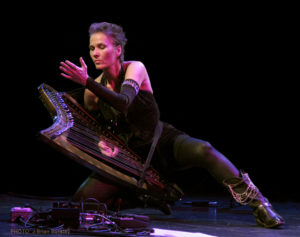
Getting physical with the “DHC” harp in concert
When I started using WordPress, I was mystified by all the ‘plug-ins.’ I didn’t understand who was creating them and what their relationship to the basic platform was.
Slowly I began to understand that each plug-in is created by a user with specific needs and that user empowers the basic software for everyone through their plug-in.
Eventually some of those plug-ins become part of the software because they’re relevant to every user – and some remain plug-ins because they’re relevant to specific kinds of users.
I began to realize that that’s exactly what I was doing with the harp. The minute I take a new “DHC” out of the box, I have a set of adaptations and … well, plug-ins … that I do to make the instrument performance-ready.
Sometimes I convince CAMAC to use these in their new version of the instrument – sometimes they’re simply my plug-ins.
That’s why I want to talk to “Wired”
I realized my story provides an unusual – and highly visual (and audio!) – example of collaboration in the world of technology design. What I experience collaborating on new technology design with CAMAC is standard in the tech world – but this is a beautiful (truly – the harp is BEAUTIFUL) and unusual example of that same collaboration model.
This is fascinating. It’s visual. It’s art. It’s technology. It’s collaboration. And I want to share it.
Here’s why TIME is of the Essence
Next week I’m flying to the CAMAC factory in France to see these harps in production for the first time and to have a video interview with the genius behind the production of the “DHC,” Jakez Francois.
And I have a video crew!
I’ll be AT the factory WITH the developer. I can ask anything and we can tour the factory.
I want to get footage that will tell the story.
I want to ask questions that will illuminate that story.
This is where I need your help:
- What questions would you want me to ask of the man who brought my invention into being, what part of the story do you want to see or hear?
- What images and video from the factory do YOU want to see?
- Do you know an editor or writer at “Wired” who would LOVE telling this story with me?
- Are there other people you know – journalists, developers – who would LOVE telling this story, or who would have illuminating questions I should ask – because my story parallels the story they’re living and telling in this world?
If you have an idea, please add it to the comments, or email me at info@hipharp.com.
Thank you!
Here’s what the harp …and I … look like today.
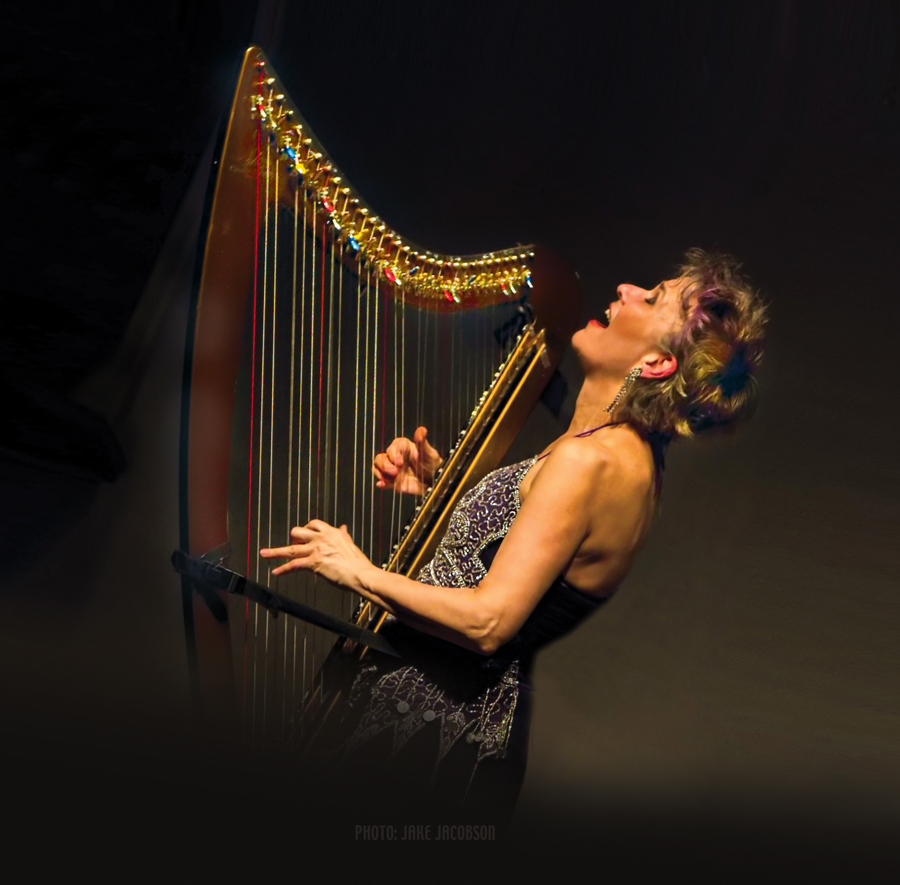
And here’s my dream scenario — off to the airport with my harp on my back and one bag. My next plug-in … a real backpack for the harp. 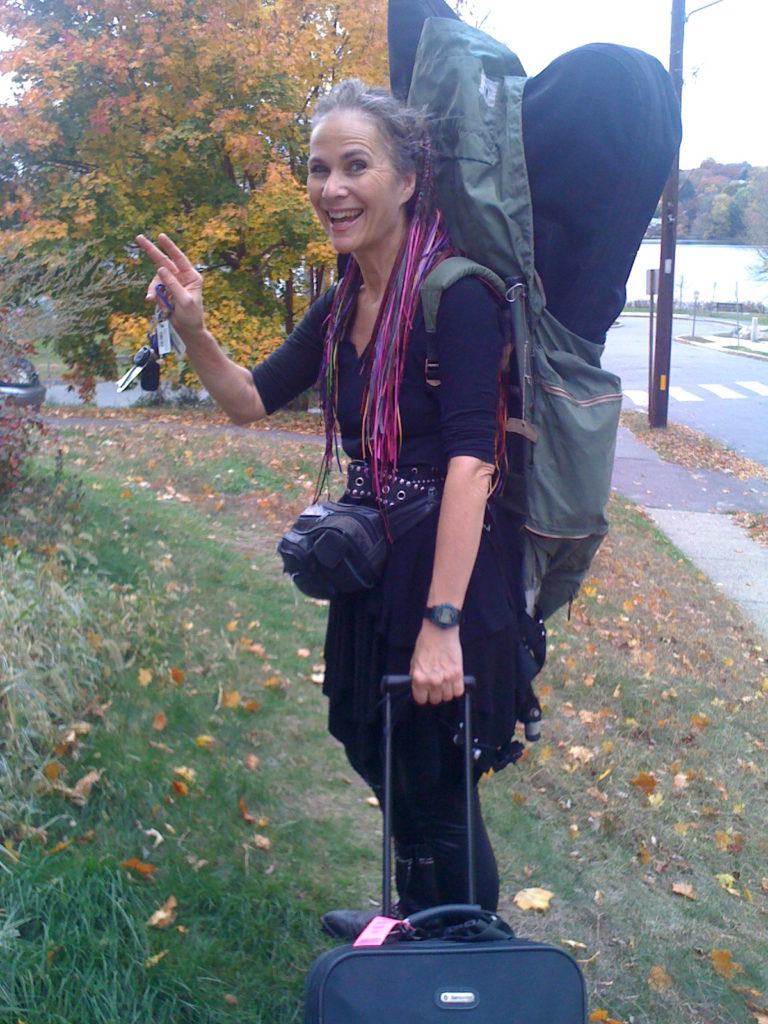

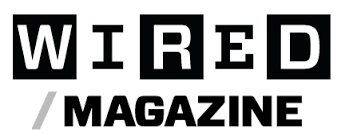





– I would like to see the harp being played while it’s on a stand, with the player sitting in a chair- the height it would be, etc.
– is the harp stand ordered through Comac?
– what is the approx length of the waiting time once a harp is ordered?
– will there be any “special” as a result of the developer and manufacturer actually meeting up?
Thanks April – those are great questions! I’ll put them on my list.
By “special” do you mean a video special? That’s what we’re shooting for! The people from the new Harp School website ( https://harp-school.com/ ) are also part of the team. They’ll be doing the videos.
I want that backpack! And a custom travel cart that carries an amp, harp, stand and accessory box. And am dying to know about your plug-ins.
As a semi-techie, I agree that plug-in is the right term.
Wish I had more questions to ask, but the Wired folks should come up with some other visionaries who bridge the worlds of instruments and electronics to help.
What about Zeena Parkins – what are the elements she’s incorporated in her one-of-a-kind electroharp? What about those folks trying to integrate MIDI technology with the instrument?
I want that backpack, too, Carol! I’ve tried several ‘prototypes’ (read that: I cut up backpacks I already have and try to mash them onto the harp case), but still looking for the real thing. And cool! If I create Electric Harp Plug-ins, what does that make me?
Zeena’s great, but she has a different trajectory from me. My goal is “Harps for the Artistic Masses” which is why I love working with CAMAC. The questions I’m looking for (and apparently I wasnt’ clear on this) are “what parts of the development story do I need to make sure to talk about with Jakez at CAMAC?”
I’ll let you know when that backpack materializes!
You need a TED talk too. (Pardon the alliteration.) Sadly I know no one at Wired. Putting thinking cap on. Also my only other thought is that when I was a software developer I wish my customers had been this interested in participating in what we were writing for them. They just wanted a working product right out of the box – we were expected to understand their needs by osmosis. But that was a while ago – maybe things have changed in the software world. I do miss it sometimes……
Ha ha! HEADLINE: Harpist Eschews Successful Artist’s Live, Longing for Software Days.
Hi DHC,
Here’s what I’d like in an electric harp (which might not be exactly what you are asking, but if you can get them to build it, I’ll buy it)…
* 30+ Strings
* Pick-ups on every string
* Super-light
* A harness that doesn’t cut into my waist and prevents the harp from swaying when I move. The harness should hold the harp in a way that is similar to a floor harp, resting on my shoulder, lower portion away from my body. I have often wanted to modify a marching drum harness for this.
* Servos on every lever, and foot pedals that control the servos. That way I can have hands-free lever changes, change only the levers I want, and create pre-sets, so I can change keys with one foot stomp.
* Fool-proof electronics that can handle the jiggling of dancing and the tossing of luggage handlers.
* Gorgeous sound.
I’ll check around Silicon Valley and see if anyone knows an editor at WIRED. Back to you shortly on that.
Wishing you a musical day,
Cymber Lily
Thanks Cymber!
Cool! Well, the “DHC” has all that except the “Servos” (does that mean midi?) so the journey’s moving forward for sure! Thanks for checking in about WIRED!
DHC
Wow! Deborah!
I have a million questions about your harp’s creation! Here’s the short list just off the top of my head:
I’d love to see things from the very beginning of your concept. Your sketches, prototype, etc., what you sent to Camac.
Then I’d love to see their engineering behind it, their sketches, blue prints, conceptual designs, how they interpreted your idea and how they decided how it would look, the size, length and type of string. I’d love to know all of the fine details of the design process that created this unique custom instrument, how long it took from concept to playing the finished product, the decision making process, etc.
Next I’d love to see the evolution in pictures and or video, from your very first prototype through to the led lighted version you played on tour with Steve Vai and current version if there’s something even newer.
Then, step by step through the actual manufacturing process would be great too, but that would require one harp being created at that moment and I’d guess time constraints wouldn’t allow it unless they had several in various states of production. So maybe just a tour of all of the manufacturing stops the harp makes in the plant during production and what takes place there. Any footage of harps actually in production would be a bonus.
I’d love to see the artistry of the final paint job and flames to top things off. And then the final outfitting of the levers and hardware, etc. As well as who does this beautiful work too. If they have a photo gallery of the custom production run with photos of every one they’ve ever produced in order that would be neat too.
Ideally for me it would end with video of you playing one that was just finished, brand new off the production line, of course it should then get your autograph and signature doodles down low on the back side to show DHC was here and played that very harp…..and be sold as a very special limited edition. 🙂
I love your harp so much I could envision a coffee table book about it!
Would any of the harp journals be a possibility? I know you’re looking for tech, but I don’t have any relevant contacts I can think of, but I’ll keep thinking about it. I would think it’s a great story for a wide variety of publications!
Have a fantastic time! I can’t wait to see the video and read the articles!
Jenavieve
Wow! You could be a video producer … now I see your deep love for this instrument!
Doing some research on who might publish this type of story I just saw this at BMI. So your performing rights organization might be able to help too. He was debuting a refractor piano.
http://www.bmi.com/news/entry/award_winning_pianist_composer_peter_manning_robinson_debuts_new_refractor
wow, wanat a great adventure!
I wish you great fun – and success.
Not sure if I have a good question, but first:
Many thanks to you and everyone who helped develop this amazing harp and system!!
It has changed my harp travel life to the better! … 🙂
…and yet, it still could be improved…
I too would love a working back-pack. Ideally padded /thin fiber-glass or carbon-fiber reinforced? – enough so it’s safe to gate-check the harp if needed, but otherwise carry on airplanes.
An easy installable wireless system – for dancing while playing.
A harp stand which is stabil but light-weight – and which can be both, putting the harp in standing AND SITTING hight (…to rest between all the heavy hip-harp-dances…)
– and therefore with a system where you can just put the harp from the harness directly into the stand without having to remove (…and lose…) hardware.
(My hubby adopted the original stand, so I can do that – but, as you said, that’s too heavy for travelling, plus I would prefer something for sitting anyway.)
As to what I’d like to see in a video visiting Camac: everything! …
How the harps are made – from the drawing board, via workshop/factory to the transport.
If ‘everything’ is too much to ask… I’m very interested in the carbon fiber manufacturing / forming / coloring process, and how the electronic parts are fitted. Thanks.
Wishing you safe travels, and happy harping.
As always, with admiration and gratitude,
Yours Annette
Great questions, Annette – and yes, all those things you want – I want them too and I’ve rigged most in ways that work, and thanks to CAMAC we now have the INSTRUMENT that can make all that possible! Thank you so much for your questions!
Everybody seems to be asking about stuff they want to see in the future for their particular needs, but it sounds like you’re wanting questions to ask the maker about how YOUR harp was developed and how it progressed to where it is today. That said, letting Camac know of other people’s needs is certainly not a bad thing.
I’d like to see a timeline (starting with your cobbled-up prototype) with pictures and descriptions of the changes at each juncture, so we can better understand how the DHC has evolved. Sketches of future developments or ideas would be great too. I, for one, would like to know how you came upon the idea of adapting bicycle technology.
And here’s a question for Camac: When are they going to hire someone that performs with some physicality, so they have a better idea of what works and what doesn’t?
I do know the editor of the Folk Harp Journal, it that’s of use.
Good luck on Sunday!
-Donna
Thanks Donna! CAMAC really IS doing their job – that’s what I realized. It’s MY job, as the primary performer to push the instrument to its limits and then to create the ‘plug-ins’ and ‘add-ons’ that will make the instrument more user-friendly, and communicate clearly to them about changes.
I mean … think about it. I can create harnesses, ways to attach the tuning key, backpack, even adapt the stand but ONLY THEY can create the actual instrument and the incredible technology that makes it SOUND beautiful and be both durable and gorgeous.
So – really – it’s up to me to push the limits and then communicate that clearly to them!
Thanks for your great comment!
From a friend of mine who asked: Do they use pickups, and have tone/volume controls? If so, can the pickup or tone controls be changed for a different sound?
Thanks for your question, Jill:
– Each string has a pickup
– The harp itself doesn’t have tone or volume control – but my amp and my ‘electronic gadgets’ do
– I personally (and this is just me) love changing the quality of the sound by how I play instead of with a lot of tone control — (but that’s just a personal ethic and I also love playing with electronic gadgets as well). One thing I ADORE about the harp is its clear, clean – but still warm – sound. It’s like a clean canvas that blooms with the colors of sound. Not meaning to be cheesey in that description – that’s just kind of how I experience it!